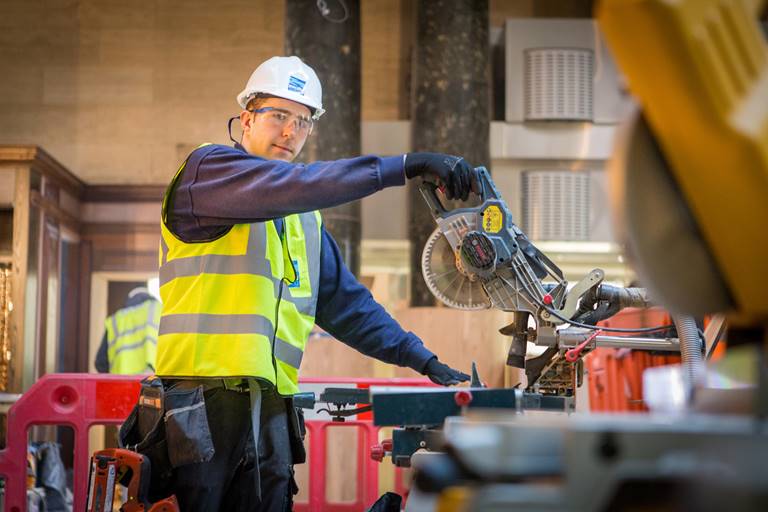Business guides listing
Decarbonising heat: low carbon heat opportunities

Decarbonising heat: low carbon heat opportunities
Decarbonising heat will play a crucial role in meeting Scotland’s net zero targets. There’s huge growth potential for Scottish businesses too. Find information and support on immediate, large-scale opportunities in the low carbon heat market.
52% of Scotland's energy demand
comes from heat
Heat is the largest single source
of carbon emissions in Scotland (around 41%, including industrial heat)
£33 billion estimated spend required
for Scotland to be net zero by 2045
Immediate large-scale opportunities
Decarbonising heat will play a crucial role in meeting Scotland’s net zero targets. It's also a growth opportunity for Scottish businesses.
There are immediate, large-scale opportunities in the low carbon heat market for companies in Scotland. These opportunities are expected to grow significantly as a result of new legislation.
Scotland is committed to reduce emissions by 75% by 2030 and to reach net zero carbon emissions by 2045. Heat accounts for 52% of Scotland's energy demand and is the single largest source of carbon emissions in Scotland - at around 41%.
At least £33 billion of investment will be needed to meet Scotland’s 2045 target. The Scottish Government will kick start the investment in this transition with £1.8 billion of capital funding over the next 5 years. By 2030, it's estimated that overall 28,000 jobs could be created by the shift towards low carbon heating, with net additional jobs of 16,400.

A growing UK and global market
The Scottish Government's Heat in Buildings Strategy shows the future direction of decarbonising heat in Scotland. The Scottish Government is now committed to £1.8 billion of expenditure in the lifetime of this parliament on building energy efficiency and low carbon heating.
Jobs supported by the transition to low carbon heat are estimated to rise by an additional 16,400 across the economy by 2030.
Installations are also forecast to increase from 3,000 per year to 124,000 cumulatively (2021-26) and to 200,000 per year by late 2020s.
This is a growing Scottish, UK and Global market with opportunities in:
- Manufacturing
- Assembly
- Design
- Consultancy and installation
Scotland – a home for low carbon heat innovation
Research and development will be critical to the expansion of low carbon heat in Scotland, Europe and around the world. Scotland is home to world-leading academic expertise along with innovative companies developing products and services at the cutting-edge of low carbon heat.
With eight academic departments and research centres focused on the heat challenge, Scotland is forging ahead with the development of new technologies for heat pumps, heat networks, geothermal and beyond.
Scottish Enterprise recently published a research piece on the key technology and innovation needs for low carbon heat.
Apply to the Green Heat Accelerator
Our Green Heat Accelerator is a three-month training course designed to support ambitious businesses involved in decarbonising heat.
We’ll help you to grow your company and build networks through regular online workshops and in-person events. You’ll also be matched with heat decarbonisation and low carbon innovation experts – they'll help you to develop commercialisation plans, become investment ready, and introduce you to relevant industry contacts.
Discover more information and apply on the programme website
Heat-related opportunities
The rapidly growing low carbon heat sector has a range of opportunities for:
- Supply chain and manufacturing
- Research, development and innovation
- Exports - the low carbon economy could deliver £60 to £170 billion of export sales by 2030
- Place-based regeneration in areas of multiple deprivation (for example, former coal mining communities)
In order to meet interim climate targets of a 75% emissions reduction by 2030, the vast majority of the 170,000 off-gas homes that currently use high emissions oil, LPG, and solid fuels, as well as at least 1 million homes currently using mains gas, must convert to zero emissions heating.
By 2030, we'll also need to convert the equivalent of 50,000 of Scotland’s non-domestic properties.
Around 3,000 new low/zero heating systems were installed in 2020. Installations are forecast to increase from 3,000 per year to 124,000 cumulatively (2021-26) and to 200,000 per year by late 2020s.
This will be achieved through district heat networks (a system of insulated pipes taking heat from a central source) or heat pumps installed in individual buildings.
There are 2.5 million occupied dwellings in Scotland and we expect the vast majority of them to still be occupied in 2045. By 2030 we should also have significant progress towards all homes in Scotland being as energy efficient as possible (meeting a minimum standard of EPC C).
Increased energy efficiency will also be crucial to ensure optimal performance for alternative low and zero direct emissions solutions such as heat pumps.
Additionally, all new builds must feature higher levels of fabric energy efficiency to reduce overall heat demand. This will apply from 2024 for building warrant applications for new homes.
The following solutions will help achieve this:
- Efficient building fabric
- Draught proofing
- Insulation
- Controls
- Energy efficiency retrofitting
- Building materials and refrigerants
Digital solutions, smart systems, sensors and controllers will also be needed to integrate into the energy systems.
Key buyers for low carbon heat
Key buyers for the low carbon heating sector include:
- New build properties will no longer be able to install natural gas boilers and must be switched to zero direct emissions alternatives such as Heat Pumps - this will apply from 2024 for building warrant applications for new homes
- The Energy Efficiency Standard for Social Housing (EESSH) was introduced to improve the energy efficiency of social housing in Scotland
- Public sector buildings and landowners
- Commercial properties and industrial companies – require low carbon heat to achieve net zero ambitions

Find companies in the low carbon heat market
You can find a directory of companies in the low carbon heat market in Scotland on the heat.directories.scot website, including:
- Heat equipment manufacture, installation, service and distribution
- Energy efficiency product manufacture, installation, service and distribution
- Low carbon fuel production and supply
Advertise your heat credentials
Find new partners and contracts by advertising your heat credentials on the Scottish Industry Directory website.
You can also check if your business is already on the directory and if your details are accurate.
Research support for your business
Our research service can also help you source lists of companies. We provide free market research and company information to businesses in Scotland.
We can also help you access the latest reports on the low carbon heat sector, including:
- Global Heat Pump Market 2020-2024
- Global Geothermal Heat Pump Market 2020-2024
- Global Industrial Heat Pumps Market 2020-2024
- Global Industrial Biomass Boiler Market 2021-2025
- Global Zero-energy Buildings Market 2020-2024
- Global District Heating Market 2020-2024
Please include the name of the report you're interested in when you get in touch.

Sources of funding
Sources of funding for heat-related activity can be found in annex B (Scotland) and annex C (UK) of the Heat in Buildings Strategy on the gov.scot website.
You can also search for sources of funding for your business on the Find Business Support website.
Our Funding Information & Support Service (FISS) can help with applying for competitive innovation funding from outside Scotland.